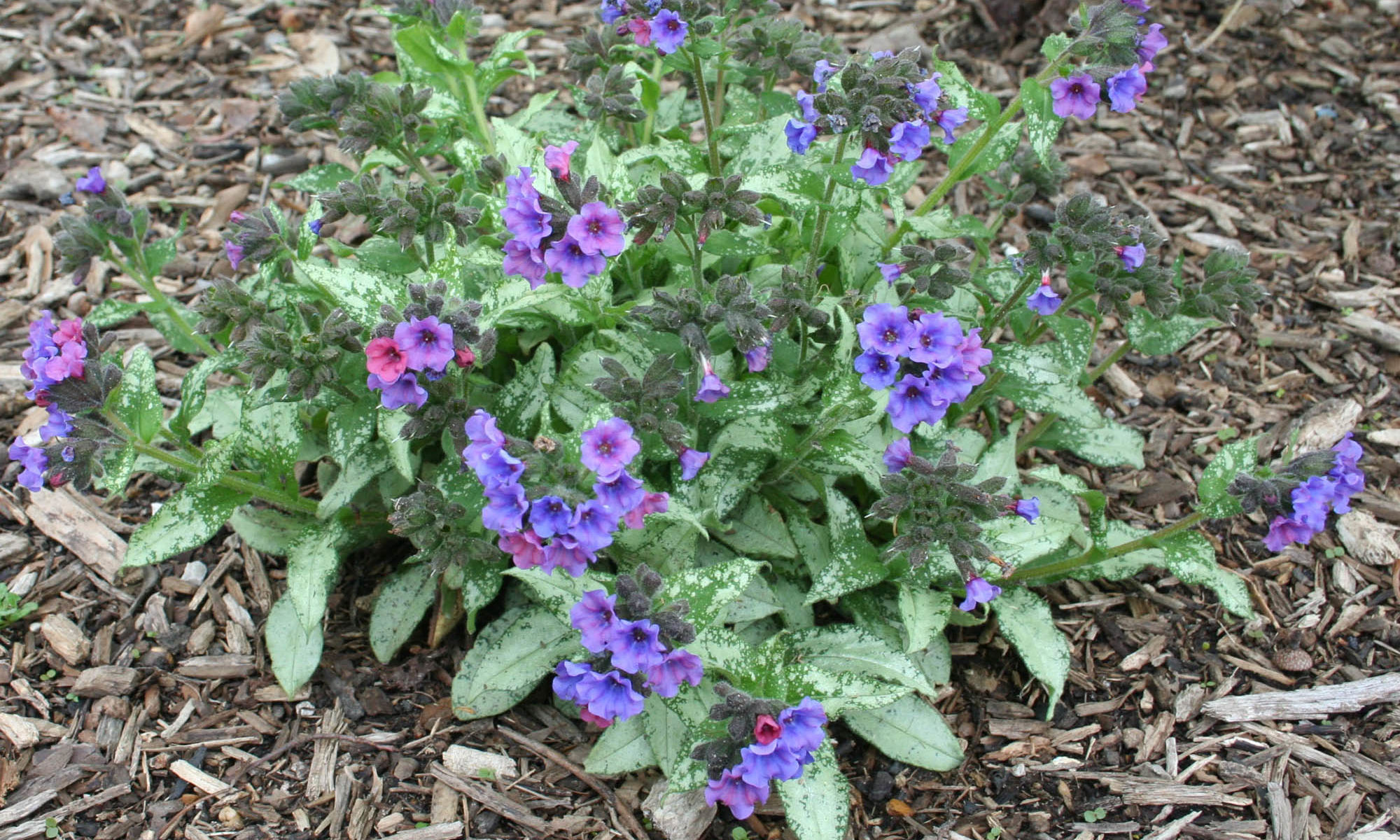
Submitted by Jason Reeves, Horticulturist, UT Gardens, Jackson
Five years ago I would never have dreamed I would be writing about lungwort. It had failed me too often in the past. In the fall of 2005 we received a tiny 2-inch pot of lungwort in the mail. I thought about tossing it, but repotted it and put it in the cold frame for the winter. By spring it had grown a bit and produced a few blue flowers. I decided to give the little thing a chance and planted it in the garden. I am sure glad I did. The following spring, I could not believe my eyes. It not only lived, but had quadrupled in size and was covered with beautiful purplish blue flowers. I dug around it, found the label and Pulmonarialongifolia ‘Diana Clare’ became my friend. I began to read up on Pulmonaria and learned that Diana Clare belongs to the species longifolia, and this species and its hybrids are more heat tolerant than the ones more commonly sold. I soon began seeking out longifolia cultivars and hybrids.
Thriving in the University of Tennessee Gardens, Jackson, you can now find ‘Diana Clare’ along with ‘Raspberry Splash’, which has raspberry-coral flowers. Also thriving are ‘Trevi Fountain’, with its cobalt-blue flowers, and subspecies cevennensis, with its dark violet-blue blooms. More selections are being tested.Pulmonaria longifolia produces long, narrow, hairy green leaves with showy silver gray spots. A few leaves toward the crown remain evergreen through the winter, but the show comes in early spring when the plant sends up 9- to 12-inch stems of purple-blue flowers followed by a flush of vibrant new leaves. This clump-forming plant multiplies slowly by creeping roots and will reach between 10 and 16 inches tall.Lungwort performs best in the garden in partial shade with adequate moisture. However, it does not tolerate wet soil especially during the winter months. Powdery mildew can sometimes be a problem and can be discouraged by not crowding the plant in the garden and by removing old foliage. The plant is hardy in zones 3 to 8.
Lungwort’s common and botanical names come from the old belief that suggested the outward appearance of a plant dictated its herbal virtues. Pulmonaria’s spotted leaves resemble a diseased lung, and was thought to be a cure for the ailment. Thank goodness for modern medicine!
Jason Reeves is a Horticulturist and Research Associate at the West Tennessee AgResearch and Education Center in Jackson. The UT Gardens located in Knoxville and Jackson are part of the University of Tennessee Institute of Agriculture. Their mission is to foster appreciation, education and stewardship of plants through garden displays, collections, educational programs and research trials. The gardens are open during all seasons and free to the public.
See http://utgardens.tennessee.edu/ and http://westtennessee.tennessee.edu/ornamentals/ for more information.
Contact:
Jason Reeves, UT Gardens, Jackson, 731-424-1643
Patricia McDaniels, UTIA Marketing and Communications Services,
615-835-4570